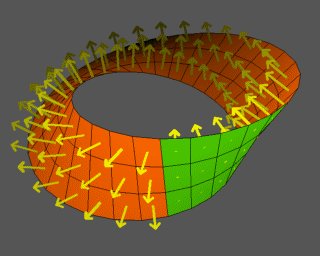
On the evening news programs, the talking heads always stress the first syllable of the word trillion when reporting on the Biden stimulus.
“One point nine TRI-llion dollars,” they say, in exactly the same way that they used to say, “One BIL-lion dollars,” and the way that Doctor Evil of the Austin Powers films said, “One MIL-lion dollars,” as he raised his pinkie.
As if a trillion dollars were a lot of money.
Where does all this digital greenery come from, and where does it go? Will it cause hyper-inflation”? Will it require tax increases? Will it crush our grandchildren? Why doesn’t the financial system crash under its own weight, like a substandard apartment building in an earthquake zone?
Everyone wants to know. Here are the answers:
The money comes from the country’s infinite well of credit. Yes, the easy money will inflate the prices of houses and stocks. Yes, the profits it creates will be partly taxed away, as a check on inflation. Yes, our grandchildren will pay the debt back—but only as it comes due, as we always have.
There’s a reason why the system doesn’t crash. The banks (by design) will always accommodate the US Treasury’s need for cash by buying its bonds, and the Fed (by design) will always accommodate the banks’ need for cash by buying back the bonds they bought from the Treasury.
As an analogy, consider the Möbius strip, a topological oddity. Imagine a belt with a half-twist in it, which creates one continuous surface out of what had been an inside surface and an outside surface (See below). When an object moves along the continuous surface, as in this video, it reaches a point where it flips into a mirror-image of itself. On the next circuit, it flips back again. It can travel that roller-coaster indefinitely.
Treasury debt and US dollars (Federal Reserve notes) are mirror images of each other. And their circuit runs through the banking system, where their identity flips back and forth in an infinite and scalable process. (You can see the flip below. Note how the vectors reverse direction.)

In theory, there’s no end to a Möbius strip, or to the ability of the Fed, the Treasury, and the banks to turn money into risk-free debt and risk-free debt into money. When those $1,400 Treasury checks hit household bank accounts they will add to the reserves in the banking system, which the banks can use to cover their outlays or to buy Treasuries.
What about those commercial banks? They have their own knitting to stick to. They loan money to borrowers with varying creditworthiness at varying levels of interest. The money they advance (out of thin air) is credit-money; they earn interest on the advance until the borrower pays it back. When the borrower returns the money, the credit-money and the loan disappear.
It’s true that, whenever a borrower writes a check to someone at another bank, the first bank has to fund the transfer with reserves; it gets those reserves back when a loan is repaid. But the banks as a rule can create much more credit-money than they have reserves in the vault or at the Fed. (That’s the “alchemy” of banking.)
There’s a lot of credit money floating out there in the economy. According to FRED (Federal Reserve Economic Research) at the St. Louis Fed, the banks have $15.25 TRI-llion in outstanding credit. Those are loans they’ve created, and earn interest on, but that the borrowers haven’t paid back yet.
Let’s say a Black Swan event occurred—a pandemic and a recession, or an alien invasion—and thousands of businesses and millions of Americans were unable to make payments on their loans. If the aggregate shortfall to the banks were, say, $400 billion, the banks and other creditors would face a big liquidity shortage.
Enter the Fed or the Treasury. Suppose that Congress instructed the Treasury to borrow $400 billion and put it into Americans’ bank accounts so they can make their loan payments and pay their bills. Solvency is restored. But what about the $400 billion in reserves that the banks paid to finance the Treasury’s deficit spending?
The banks can get the money back, either by selling the Treasuries they purchased to the Fed or borrowing against them at the Fed. Had there been no stimulus, the banks could still borrow the liquidity they need from the Fed—assuming they can post high-quality assets as collateral.
People balk at suggestions that the government drives the economy, and they should. It doesn’t. What drives the economy is the fact that 160 million Americans get out of bed, shower, put on decent clothes, and go to “work” every day so they can extinguish the loans that banks and credit card companies have advanced to them.
If a Black Swan interrupts the repayment of credit-money, as one did in September 2008 and again in March 2020, a giant money crevasse can open up beneath the financial system’s feet. Given the vastness of the banks’ credit advances ($15.25 TRI-llion), you can see how easily that crevasse might swallow a trillion dollars or two.
Part of the Biden stimulus will help fill or patch that crevasse. Much of it will probably pay off debt and disappear, which may explain why Americans won’t be pushing wheelbarrows full of banknotes through the streets. If the crevasse yawns too wide and too deep—and vital companies like GM or Boeing start sliding into it—no amount of Treasury debt or Fed money-printing could patch it over or fill it back up. Fortunately, we’re not there yet.
© 2021 RIJ Publishing LLC. All rights reserved.

